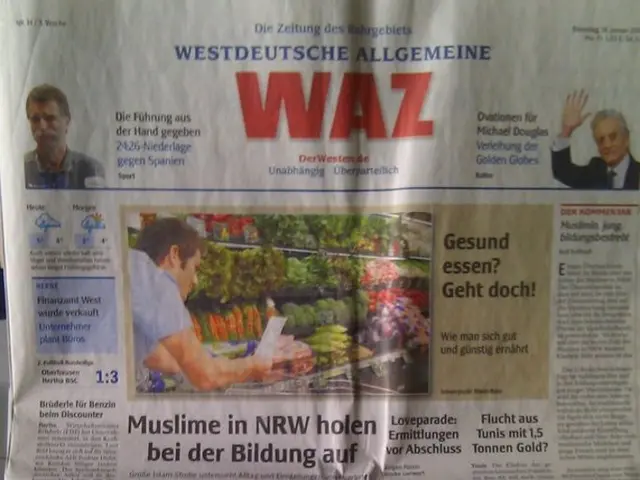Investigating the Influence of Jewish Dispersion on Cultural Landscapes
Scattered Across the Globe: A Historical Overview of the Jewish Diaspora
The Jewish Diaspora, a term symbolizing the dispersal of Jewish people beyond their ancestral homeland, Israel, carries a narrative that's as vibrant as it is enduring. This isn't merely a tale of movement, but of resilience, adaptation, and a strong cultural identity that has transcended borders.
Jewish communities, despite centuries of migration, have managed to remain distinct while being influenced by the cultures of their host nations.
Setting the Stage: Early Migrations
The Jewish Diaspora's origins date back to ancient times, with a significant early dispersal happening in 586 BCE following Babylon's conquest of Judah. This marked the first mass exodus of Jews, setting a pattern of migration and settlement that shaped Jewish history. The 70 CE destruction of the Second Temple by the Romans further dispersed communities throughout the Roman Empire, right from North Africa to Europe and the Middle East.
Religion and Cultural Preservation
Religion played a pivotal role in maintaining Jewish cultural identity throughout the Diaspora. Jewish law, traditions, and customs provided a cohesive framework that helped sustain communal life. The synagogue evolved as a central hub for worship, study, and social bonding, becoming a cornerstone of Jewish life when the Temple vanished.
Observing the Sabbath, keeping kosher, and celebrating religious festivals strengthened communal bonds and reaffirmed Jewish identity, while religious education through the study of the Torah and Talmud continued to preserve the Jewish heritage.
The Power of Language
In addition to religion, language was another crucial element in the preservation of Jewish culture. Hebrew remained a liturgical language, while Yiddish, developed in Central Europe during the Middle Ages, and Ladino, derived from Old Spanish, flourished as everyday languages in Jewish communities, carrying distinct folklore, humor, and ethical teachings.
These languages served as vessels for transmitting cultural values across generations, facilitating communication within communities, and bridging the diaspora.
Contributions to Host Societies
While maintaining their identity, Jewish communities have significantly contributed to the cultures of their host countries. In medieval Islamic Spain, Jewish scholars played a vital role in the translation movement, preserving philosophical and scientific knowledge from ancient Greece. In Eastern Europe, Jews contributed economically as traders and artisans. In the United States, Jewish immigrants have shaped the cultural, scientific, and political fabric.
Challenges and Resilience
The history of the Jewish Diaspora has been marked by adversity. Jews have faced persecution and exclusion in various forms, including the Spanish Inquisition, pogroms in Eastern Europe, and the Holocaust. Despite such hardships, the resilience of the Jewish community has been unparalleled, with the establishment of Israel in 1948 offering a homeland and refuge while the Diaspora continues to thrive globally.
The Modern Jewish Diaspora
Today, the Jewish Diaspora remains lively with significant populations in the United States, France, Canada, and many other countries. These communities preserve their heritage while adapting to and enriching contemporary societies. The fusion of traditional Jewish practices with local customs leads to innovative cultural expressions, from Jewish-American literature to Israeli music that merges Western and Middle Eastern musical influences.
A Fresh Take on Ancient Traditions
One of the complex issues shaping the modern Jewish Diaspora is intermarriage. In places like the United States, intermarriage rates have surged, stimulating discussions about Jewish identity and continuity. While some view it as a challenge, others see it as an opportunity for renewal and growth.
Technology and Connectedness
In today's digital age, technology has facilitated remarkable connectivity among Jewish communities worldwide. Online platforms, virtual synagogues, educational resources, and more have made it easier for Jews, particularly younger generations, to engage with their culture, learn about their history, and connect with others from across the globe.
Cultural Renaissance in the Arts
The Jewish Diaspora has undergone a cultural renaissance in the arts, with increasing numbers of films, books, and music exploring Jewish themes and Diaspora experiences. This cultural output enriches the community internally and serves as a bridge for non-Jewish audiences, promoting understanding and appreciation of Jewish culture and history.
Political Influence and Advocacy
Jewish communities worldwide have organized politically, advocating for their rights and interests both domestically and internationally. Efforts to combat antisemitism, support Israel, and impact policies affecting their communities continue to position the Jewish Diaspora as a significant player in international politics and communal life.
Preservation of Lesser-Known Jewish Cultures
Efforts to preserve the cultures of smaller, less well-known Jewish communities, such as those in Ethiopia and the Caucasus, ensure that the full diversity of the Jewish experience is remembered and celebrated.
The Role of Museums and Cultural Institutions
Museums and cultural institutions play essential roles in preserving and showcasing the history and culture of the Jewish Diaspora. Institutions like Berlin's Jewish Museum and New York's Museum of Jewish Heritage offer educational programs and exhibitions, providing insights into the multifaceted nature of Jewish life and history.
A Legacy of Endurance and Adaptation
From ancient migrations to contemporary cultural expressions, the Jewish Diaspora serves as a testament to an enduring spirit. Jews have persistently preserved their cultural heritage while contributing richly to the global tapestry. Their diaspora story is not solely a historical narrative but a living, evolving dialogue about resilience, identity, and universal quests for belonging.
- Through various centuries, the Jewish Diaspora has adapted and thrived in host societies, imparting significant contributions to religion, philosophy, science, economics, culture, and politics.
- Jewish communities have enriched local fashion-and-beauté and food-and-drink traditions, as shown in their unique cuisines, apparel, and artisanal crafts.
- Education-and-self-development has always been a top priority for Jewish communities, with schools and institutions focusing on skills-training, intellectual discourse, and personal-growth.
- Travels and explorations have not only been a means for physical migration but also an opportunity for intellectual expansion and cultural exchange among Jewish settlements.
- In the realm of entertainment, Jewish artists and creators have played a pivotal role in shaping pop-culture, sci-fi-and-fantasy genres, job-search platforms, and more.
- Books, as vessels of knowledge and storytelling, have played a crucial role in recording and preserving the history and experiences of the Jewish Diaspora, from ancient texts to contemporary literature.
- As the Jewish Diaspora continues to evolve, the preservation of lesser-known communities' heritage and cultural expressions remains essential for a comprehensive understanding of the Jewish experience.








